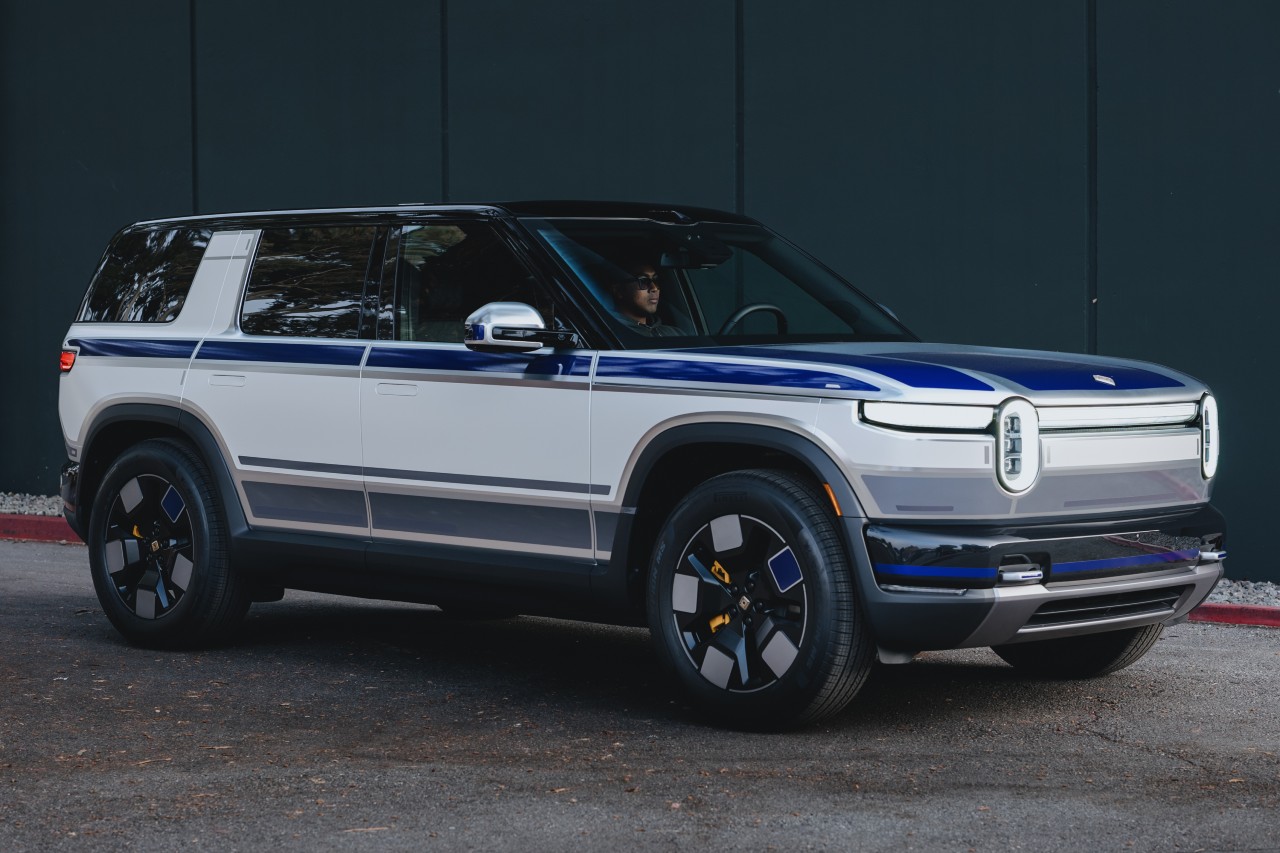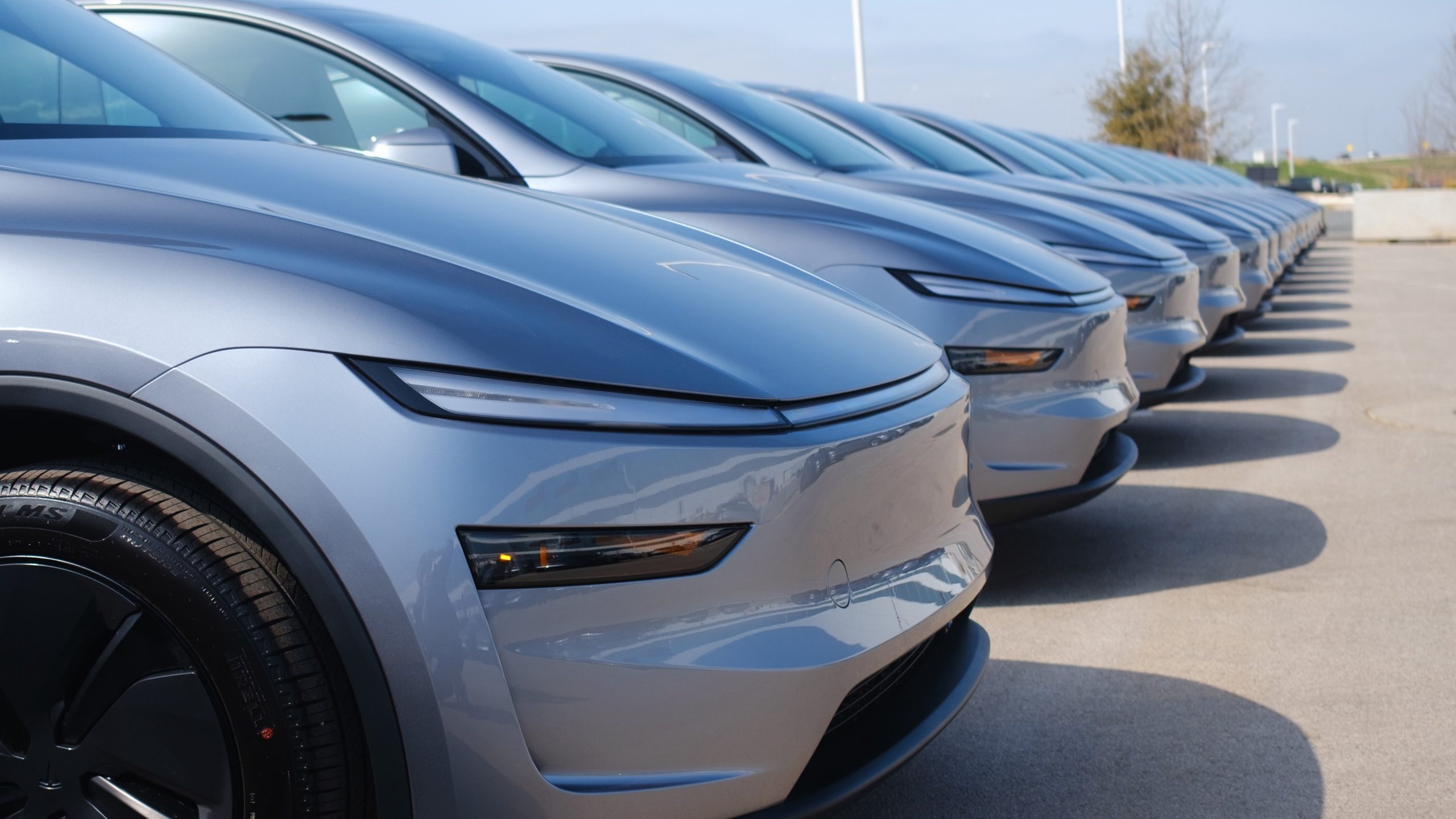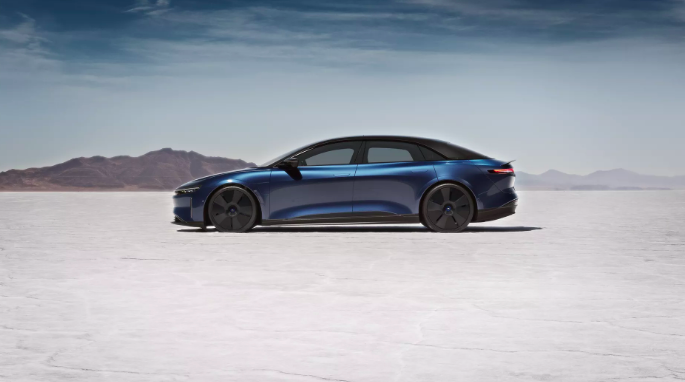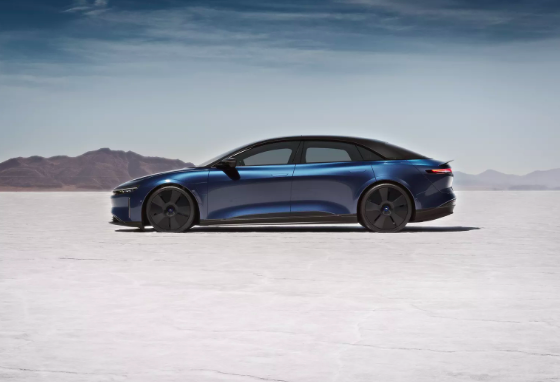In a recent video, one notable tech and electric vehicle (EV) reviewer has called the pricey Lucid Air “the best sedan in the world” and “one of the best sedans ever made,” alongside several other major compliments.
Tech and EV reviewer Marques Brownlee, better known as MKBHD, shared a new video to his YouTube channel Auto Focus on Friday reviewing the luxury-level Lucid Air Sapphire. In the review, Brownlee notes that the EV is “incredible,” as he goes through various elements of the car’s exterior, interior, and performance.
“This is one of the best sedans ever made—I’m not saying electric—it’s one of the best sedans ever made,” Brownlee says in the video. “And honestly, yeah, it’s peak EV right now. This is as good as it gets.”
MKBHD says the Fisker Ocean is the ‘worst car’ he’s ever reviewed
He reiterates a point he has made in previous videos, saying that while the Tesla Model S Plaid is a solid daily driver, it’s just a better version of the Model S. This, he adds, is not the case when comparing the Sapphire to the regular Lucid Air line.
With a price tag of around $250,000, the Sapphire sells in the ultra-luxury segment, and Brownlee points to the EV’s range, storage, build quality, tech features, and general driving feel as the things that make it live up to that segment’s name.
Still, Brownlee doubles down on both his love for Tesla’s vehicles as his favorite daily drivers, noting that the Sapphire would be a close second to vehicles from the EV giant:
“Look, if you made me daily drive any EV in the world right now, and it couldn’t be a Tesla, it would be this,” Brownlee says. “It would be. I would have to matte black wrap it—I don’t know if I love the way it looks—but it would have to be this.
“It’s just way too good at driving to not pick it. The 400 miles is honest, like you can drive it like a grandma and get 400 miles, but just like the Plaid, with those big motors, you can really pull through battery quickly because it’s willing to deploy a ton of power.
“But I just don’t see any downsides with this car, simple as that. I think it’s the best sedan in the world, it’s crazy.”
Check out the full video from MKBHD’s Auto Focus below.
Brownlee also reviewed the Lucid Air Grand Touring trim in 2022, and he has reviewed several other EVs over the years. More recently, he called Tesla’s refreshed Model 3 a “mini Model S” in February, just weeks before going on to call the Fisker Ocean EV the “worst car he’s ever reviewed.”
Lucid’s first Air Sapphire rolled off the production line in Arizona last October, after initially unveiling the premium version of the vehicle in 2022. The EV maker is also preparing to launch its upcoming Gravity SUV later this year.
What are your thoughts? Let me know at zach@teslarati.com, find me on X at @zacharyvisconti, or send us tips at tips@teslarati.com.

News
Rivian unveils self-driving chip and autonomy plans to compete with Tesla
Rivian, a mainstay in the world of electric vehicle startups, said it plans to roll out an Autonomy+ subscription and one-time purchase program, priced at $49.99 per month and $2,500 up front, respectively, for access to its self-driving suite.

Rivian unveiled its self-driving chip and autonomy plans to compete with Tesla and others at its AI and Autonomy Day on Thursday in Palo Alto, California.
Rivian, a mainstay in the world of electric vehicle startups, said it plans to roll out an Autonomy+ subscription and one-time purchase program, priced at $49.99 per month and $2,500 up front, respectively, for access to its self-driving suite.
CEO RJ Scaringe said it will learn and become more confident and robust as more miles are driven and it gathers more data. This is what Tesla uses through a neural network, as it uses deep learning to improve with every mile traveled.
He said:
“I couldn’t be more excited for the work our teams are driving in autonomy and AI. Our updated hardware platform, which includes our in-house 1600 sparse TOPS inference chip, will enable us to achieve dramatic progress in self-driving to ultimately deliver on our goal of delivering L4. This represents an inflection point for the ownership experience – ultimately being able to give customers their time back when in the car.”
At first, Rivian plans to offer the service to personally-owned vehicles, and not operate as a ride-hailing service. However, ride-sharing is in the plans for the future, he said:
“While our initial focus will be on personally owned vehicles, which today represent a vast majority of the miles to the United States, this also enables us to pursue opportunities in the rideshare space.”
The Hardware
Rivian is not using a vision-only approach as Tesla does, and instead will rely on 11 cameras, five radar sensors, and a single LiDAR that will face forward.
It is also developing a chip in-house, which will be manufactured by TSMC, a supplier of Tesla’s as well. The chip will be known as RAP1 and will be about 50 times as powerful as the chip that is currently in Rivian vehicles. It will also do more than 800 trillion calculations every second.
Meet the Rivian Autonomy Processor.
Fast, smart, scalable and purpose-built for autonomous driving and the world of physical AI. Hitting the open road in 2026. pic.twitter.com/0wYXi5WKy7
— Rivian (@Rivian) December 11, 2025
RAP1 powers the Autonomy Compute Module 3, known as ACM3, which is Rivian’s third-generation autonomy computer.
ACM3 specs include:
- 1600 sparse INT8 TOPS (Trillion Operations Per Second).
- The processing power of 5 billion pixels per second.
- RAP1 features RivLink, a low-latency interconnect technology allowing chips to be connected to multiply processing power, making it inherently extensible.
- RAP1 is enabled by an in-house developed AI compiler and platform software
As far as LiDAR, Rivian plans to use it in forthcoming R2 cars to enable SAE Level 4 automated driving, which would allow people to sit in the back and, according to the agency’s ratings, “will not require you to take over driving.”
More Details
Rivian said it will also roll out advancements to the second-generation R1 vehicles in the near term with the addition of UHF, or Universal Hands-Free, which will be available on over 3.5 million miles of roadway in the U.S. and Canada.
More than any other feature, our owners have asked for more hands-free miles.
With Universal Hands-Free, you can now enjoy hands-free assisted driving on any road with clearly defined lanes. That’s roughly 3.5 million miles in the U.S. and Canada.
Look for it in our next… pic.twitter.com/ZFhwVzvt6b
— Rivian (@Rivian) December 11, 2025
Rivian will now join the competitive ranks with Tesla, Waymo, Zoox, and others, who are all in the race for autonomy.
News
Tesla partners with Lemonade for new insurance program
Tesla recently was offered “almost free” coverage for Full Self-Driving by Lemonade’s Shai Wininger, President and Co-founder, who said it would be “happy to explore insuring Tesla FSD miles for (almost) free.”

Tesla owners in California, Oregon, and Arizona can now use Lemonade Insurance, the firm that recently said it could cover Full Self-Driving miles for “almost free.”
Lemonade, which offered the new service through its app, has three distinct advantages, it says:
- Direct Connection for no telematics device needed
- Better customer service
- Smarter pricing
The company is known for offering unique, fee-based insurance rates through AI, and instead of keeping unclaimed premiums, it offers coverage through a flat free upfront. The leftover funds are donated to charities by its policyholders.
On Thursday, it announced that cars in three states would be able to be connected directly to the car through its smartphone app, enabling easier access to insurance factors through telematics:
Lemonade customers who own @Tesla vehicles in California, Oregon, and Arizona can now connect their cars directly to the Lemonade app! ⚡🚘
Direct connection = no telematics device needed 📵
Better customer experience 💃
Smarter pricing with Lemonade 🧠This is a game-changer… pic.twitter.com/jbabxZWT4t
— Lemonade (@Lemonade_Inc) December 11, 2025
Tesla recently was offered “almost free” coverage for Full Self-Driving by Lemonade’s Shai Wininger, President and Co-founder, who said it would be “happy to explore insuring Tesla FSD miles for (almost) free.”
The strategy would be one of the most unique, as it would provide Tesla drivers with stable, accurate, and consistent insurance rates, while also incentivizing owners to utilize Full Self-Driving for their travel miles.
Tesla Full Self-Driving gets an offer to be insured for ‘almost free’
This would make FSD more cost-effective for owners and contribute to the company’s data collection efforts.
Data also backs Tesla Full Self-Driving’s advantages as a safety net for drivers. Recent figures indicate it was nine times less likely to be in an accident compared to the national average, registering an accident every 6.36 million miles. The NHTSA says a crash occurs approximately every 702,000 miles.
Tesla also offers its own in-house insurance program, which is currently offered in twelve states so far. The company is attempting to enter more areas of the U.S., with recent filings indicating the company wants to enter Florida and offer insurance to drivers in that state.
News
Tesla Model Y gets hefty discounts and more in final sales push

Tesla Model Y configurations are getting hefty discounts and more benefits as the company is in the phase of its final sales push for the year.
Tesla is offering up to $1,500 off new Model Y Standard trims that are available in inventory in the United States. Additionally, Tesla is giving up to $2,000 off the Premium trims of the Model Y. There is also one free upgrade included, such as a paint color or interior color, at no additional charge.
NEWS: Tesla is now offering discounts of up to $1,500 off new Model Y Standard vehicles in U.S. inventory. Discounts of up to $2,000 are also being offered on Model Y Premiums.
These discounts are in addition to the one free upgrade you get (such as Diamond Black paint) on… pic.twitter.com/L0RMtjmtK0
— Sawyer Merritt (@SawyerMerritt) December 10, 2025
Tesla is hoping to bolster a relatively strong performance through the first three quarters of the year, with over 1.2 million cars delivered through the first three quarters.
This is about four percent under what the company reported through the same time period last year, as it was about 75,000 vehicles ahead in 2024.
However, Q3 was the company’s best quarterly performance of all time, and it surged because of the loss of the $7,500 EV tax credit, which was eliminated in September. The imminent removal of the credit led to many buyers flocking to Tesla showrooms to take advantage of the discount, which led to a strong quarter for the company.
2024 was the first year in the 2020s when Tesla did not experience a year-over-year delivery growth, as it saw a 1 percent slide from 2023. The previous years saw huge growth, with the biggest coming from 2020 to 2021, when Tesla had an 87 percent delivery growth.
This year, it is expected to be a second consecutive slide, with a drop of potentially 8 percent, if it manages to deliver 1.65 million cars, which is where Grok projects the automaker to end up.
Tesla will likely return to its annual growth rate in the coming years, but the focus is becoming less about delivery figures and more about autonomy, a major contributor to the company’s valuation. As AI continues to become more refined, Tesla will apply these principles to its Full Self-Driving efforts, as well as the Optimus humanoid robot project.
Will Tesla thrive without the EV tax credit? Five reasons why they might
These discounts should help incentivize some buyers to pull the trigger on a vehicle before the year ends. It will also be interesting to see if the adjusted EV tax credit rules, which allowed deliveries to occur after the September 30 cutoff date, along with these discounts, will have a positive impact.










